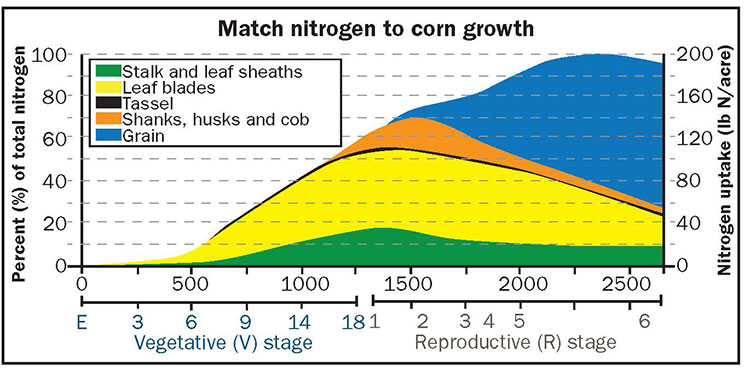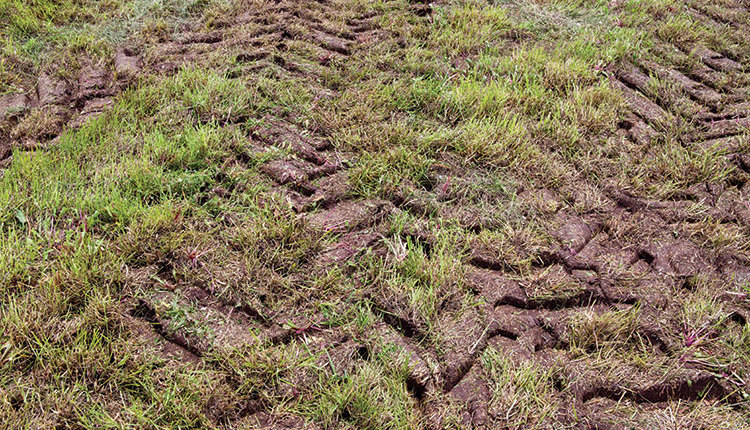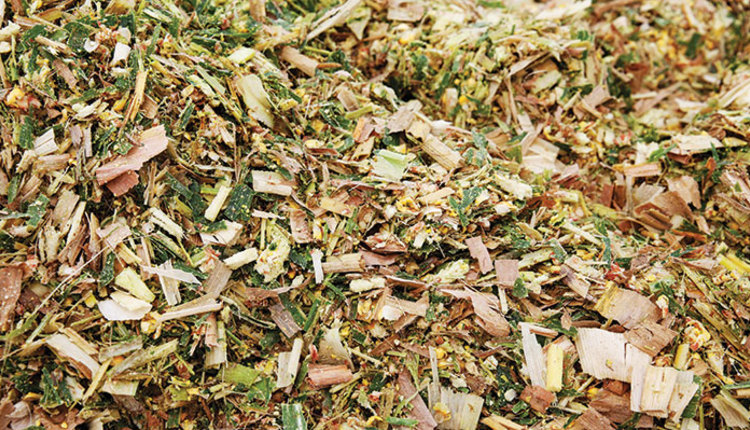Wiersma is the alfalfa business manager with DuPont Pioneer. Thomas is retired from the William H. Miner Agricultural Research Institute and president of Oak Point Agronomics Ltd.

Nitrogen use and management continues to be one of the most complex and challenging aspects of modern corn production. Nitrogen (N) can be as much as 20 percent of the cost of growing the corn crop. For a growing corn plant, N is the fuel driving the plant’s metabolism. With fuel use in your car, the more miles per gallon you get, the less it costs to run. Similarly, the more bushels of corn we get from each pound of nitrogen used, the more efficient and less expensive it is to grow. More efficient corn production results in a win-win for farmers and the environment.
Nitrogen is the single largest nutrient need of corn; and even under the best of systems, the corn crop only takes up about half of the nitrogen delivered through fertilizers. Unused nitrogen causes a major environmental concern since it is a mobile nutrient and can leach to groundwater or run off into streams, rivers, and the ocean.
The real story is this, in the last 40-plus years, improved corn hybrids and better N management means growers have improved nitrogen use efficiency (NUE) by nearly 80 percent. Even though total N rates have risen, today’s livestock and grain farmers are harvesting more tons per acre or bushels of corn per unit of fertilizer N applied.
The future of NUE in corn production depends on understanding how and when plants take up N. Understanding patterns of uptake will help farmers optimize N use and application timings. Recent DuPont Pioneer research indicates 63 percent of corn’s N uptake occurs by flowering (R1 stage), and the rest is taken up during the grain-fill period.
In high-yielding fields, the corn plant needs between 140 and 210 pounds of N per acre to support grain development. Of interest, about 85 to 130 pounds N per acre uptake occurs after flowering. This N originates from both remobilized vegetative tissue N and continued uptake from the soil.
To maximize yield and NUE, it is critical to ensure season-long N supply. Timing applications closer to maximum crop use results in a higher likelihood of N being taken up and lowers the risk of N loss.
Traditionally, corn growers have targeted N availability to coincide with vegetative growth prior to flowering and have downplayed the importance of postflowering N uptake. Research on historically old corn hybrids reinforces this concept. Recent studies comparing older corn hybrids with modern era hybrids show N uptake trends have changed. Hybrids developed since 2000 take up small amounts of additional N, but more importantly, uptake after flowering can be as much as 40 percent more.
Make timely applications
Armed with this new knowledge about N use patterns in our current corn hybrids, growers need to develop a strategy to align N application to reflect higher postflowering N uptake. Recommendations now say to apply up to 70 percent of the total seasonal N requirement prior to planting for vegetative growth. Then apply the remaining 30 percent as late during the growing season as equipment and plant growth allows.
This later application also allows for replacing any N lost due to high rainfall conditions earlier in the season. Another option is to use a nitrification inhibitor to late applications to help delay N release closer to flowering.
The future of N use in corn continues to be bright. Dynamically accounting for factors unique to the growing environment found in your farm fields help you to better identify the true N needs of your corn crop. Simulating things like crop growth, N mineralization, leaching, denitrification, and volatilization will help improve N management and save money.
Next time you have a chance, tell your urban neighbor the great success story. Today’s modern hybrids are getting more N mileage, utilizing N up to 80 percent better than those grown before the year 2000. This means greater sustainability for your operation and for the environment.
1612_748











